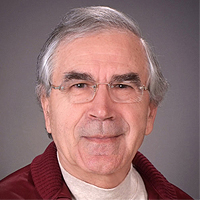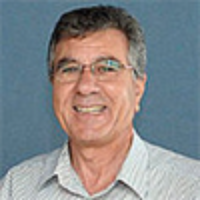Investigation of Retinal Microvascular Findings in patients with Coronary Artery Disease
Published on: 7th July, 2017
OCLC Number/Unique Identifier: 7286351578
Objectives: Retinal microvascular anomalies may be a marker for cardiovascular diseases. Our aim in this study was to investigate the utility of ocular fundoscopic examination as a noninvasive method in specifying the patients who carry a risk for coronary artery disease.
Material and Method: Patients who were diagnosed with coronary artery disease by coronary angiography were included in our study. Bilateral fundoscopic examination was performed in these patients. Fundoscopic findings and risk factors for coronary artery disease were evaluated.
Results: This study enrolled 100 patients (male: 72 (72%), mean age: 58.25±7.1) who were diagnosed with coronary artery disease by coronary angiography. Upon fundoscopic examination, 87% of the study population had atherosclerotic changes. Grade I atherosclerosis was found in 54% of the patients, grade II atherosclerosis was found in 32% of the patients and grade III atherosclerosis was found in 1% of the patients. Increased retinal tortuosity was present in 65% of the patients. Hollenhorst plaque was observed in 3 patients. Drusenoid bodies were observed with a statistically significantly higher rate in the patients who were not using clopidogrel compared to the patients who were using clopidogrel (p<0.001).
Conclusions: Retinal findings are frequently found in patients with coronary artery disease. Therefore, fundoscopic examination is a noninvasive and feasible examination method which can be frequently used in the evaluation of cardiac functions.
Incidence of symptom-driven Coronary Angiographic procedures post-drug-eluting Balloon treatment of Coronary Artery drug-eluting stent in-stent Restenosis-does it matter?
Published on: 29th June, 2017
OCLC Number/Unique Identifier: 7286426167
Objectives: The clinical impact of drug-eluting balloon (DEB) coronary intervention for drug-eluting in-stent restenosis (DES-ISR) is not fully known. To further evaluate this impact, we aimed to describe the incidence of symptom-driven coronary angiography (SDCA), an under-reported but potentially informative outcome metric in this cohort of patients. Methods: We retrospectively identified all patients (n=28) who had DEB-treated DES-ISR at University Hospital Limerick in between 2013-2015 and evaluated the incidence of subsequent SDCA as the primary endpoint. Data were expressed as mean ± SD and %. Results: Baseline demographics demonstrate a mean age 63±9 years with 61% of DEB-treated DES-ISR presenting with acute coronary syndrome. Mean number of ISR per patient and number of DEB per lesion was 1.2±0.6 lesions and 1.2±0.6 balloons, respectively. The incidence of SDCA was 54% after mean follow-up duration of 179±241 days. 67.8% of patients had follow-up data beyond 12 months. Within the first year of follow-up, the incidence of SDCA with and without target lesion revascularization (TLR) was 11% and 36% respectively. Among patients with SDCA without TLR, 30% had an acute coronary syndrome not requiring percutaneous coronary intervention. Conclusions: A high incidence of SDCA was observed, particularly within the first 12 months after DEB-treated DES-ISR. This under-reported metric may represent a cohort at higher cardiovascular risk but requires further confirmation in larger studies.
Thrombolysis, the only Optimally Rapid Reperfusion Treatment
Published on: 23rd June, 2017
OCLC Number/Unique Identifier: 7286427398
Thrombolysis with tissue plasminogen activator (tPA) has been plagued by inadequate efficacy and a high risk of intracranial hemorrhage (ICH), which led to its replacement by procedures like percutaneous coronary intervention (PCI) whenever possible. Since this requires hospitalization, it is time-consuming, and compromising salvage of brain tissue and myocardium. Thrombolysis is the only first-line treatment that can provide sufficiently timely treatment for optimal recovery of organ function. However, for this potential to be realized, its efficacy and safety must be significantly improved over the current method. By adopting the sequential, synergistic fibrinolytic paradigm of the endogenous system, already verified by a clinical trial, this becomes possible. The endogenous system’s function is evidenced by the fibrinolytic product D-dimer that is invariably present in blood, and which increases >20-fold in the presence of thromboembolism. This system uses tPA to initiate lysis, which is then completed by the other fibrin-specific activator prourokinase (proUK). Since tPA and proUK in combination are synergistic in fibrinolysis, it helps explain their efficacy at their low endogenous concentrations.
Spontaneous rupture of a giant Coronary Artery Aneurysm after acute Myocardial Infarction
Published on: 21st June, 2017
OCLC Number/Unique Identifier: 7286358318
Coronary artery aneurysm is commonly defined as a localized dilatation exceeding the diameter of adjacent normal coronary segments by 50% [1]. Coronary artery aneurysms may be fusiform, involving the full circumference of the coronary artery, or saccular, involving only a portion of the circumference [2]. Causes of coronary artery aneurysms include atherosclerosis (accounting for 50% of cases), Kawasaki disease, polyarteritis nodosa, infection, trauma, coronary dissection, percutaneous coronary angioplasty, and congenital malformations [3]. The abnormal blood flow within the coronary artery aneurysm may lead to thrombus formation, embolization, rupture, myocardial ischemia or myocardial infarction [4]. Here we present a case of a giant fusiform coronary artery aneurysm who passed away due to coronary rupture after acute myocardial infarction.
Procedure utilization, latency and mortality: Weekend versus Weekday admission for Myocardial Infarction
Published on: 19th May, 2017
OCLC Number/Unique Identifier: 7286355059
Background: Due to variations in hospital protocols and personnel availability, individuals with myocardial infarction admitted on the weekend may be less likely to receive invasive procedures, or may receive them with a greater latency than those admitted during the week. Whether or not this occurs, and translates into a difference in outcomes is not established.
Method: Using the Nationwide Inpatient Sample (2008-2011) database, we identified all patients admitted with a principle diagnosis of acute myocardial infarction. They were stratified by weekend or weekday admission. Baseline clinical characteristics, procedure utilization and latency to procedure were compared, and logistic regression models were constructed to assess the relationship between these variables and in-hospital mortality.
Results: Patient demographics and provider-related characteristics (hospital type, geography) were similar between weekend and weekday admission for myocardial infarction. Adjusted for covariates, we found that the odds of mortality for a weekend admission are 5% greater than for a weekday admission (OR: 1.05; 95% CI: 1.01, 1.09, p=0.009). For the utilization of an invasive procedure, we found that the odds of receiving a procedure for a weekend admission were 12% less than the odds for a weekday admission, adjusted for the other covariates (OR: 0.88; 95% CI: 0.86, 0.91, p<0.001). In addition, we found that the time to procedure was an average of 0.18 days (4.32 hours) longer for weekend admissions compared to weekday admissions (95% CI: 0.16, 0.20, p<0.001). However, we did not observe a significant difference in the overall length of stay for weekend and weekday admissions (0.004 days; 95% CI: -0.04, 0.05, p=0.87).
Conclusion: In a large and diverse subset of patients admitted with myocardial infarction, weekend admission was associated with fewer procedures, increased latency to those procedures, and a non-significant trend towards greater in adjusted in-hospital mortality.
Indications and Results of Coronarography in Senegalese Diabetic Patients: About 45 Cases
Published on: 20th February, 2017
OCLC Number/Unique Identifier: 7286426513
Introduction: Coronary disease accounts for 75% of diabetic mortality. Coronary angiography reveals lesions that are often diffuse, staggered and multi-truncated. The objective of this study was to determine the indications and results of coronary angiography in diabetic patients.
Method: This is a cross-sectional, descriptive and analytical study which took place from May 2013 to July 2015 at the cardiology clinic of the Aristide Le Dantec hospital. We have included all diabetics who have benefited from coronary angiography by studying clinical and paraclinical data, particularly coronary angiography ones.
Results: During this period, 400 patients had coronary angiography, including 45 diabetics, a hospital prevalence of 11.25%. The average age of our patients was 62.27 y/o with extremes of 44 and 85 y/o. The sex ratio was 1.6 in favor of men. Diabete was revealed in 42 patients. Almost all patients were type II diabetics (44 patients) since 9.94 years in average. The associated cardiovascular risk factors were hypertension 66.7% and dyslipidemia 49.6%. Only 4 patients had typical chest pain. The electrocardiogram was abnormal in 84.4% of cases with 26 cases of SCA ST +. Coronary angiography was abnormal in 37 patients with significant stenosis in 30 patients. A single-truncular lesion was found in 14 cases, 8 had bi-truncular and other 8 had tri-truncular one. The anterior interventricular artery and the segment II of the right coronary were the most affected branches. Concerning the management, 14 patients had angioplasty with an active stent, 8 patients had medical treatment alone and 9 patients had coronary artery bypass surgery. Accidents occured for 4 patients, two of whom had arterial spasm, one of a vagal discomfort and another had an occlusion of the circumflex that led to the implantation of a stent.
Conclusion: Diabetes is accompanied by progressive coronary atherosclerosis, which has an adverse effect on patients' prognosis. Tri-truncal affection and indications for coronary artery bypass surgery are common
Short and Medium-Term Evaluation of Patients in Coronary Post-Angioplasty: Préliminary results at the Cardiology Department of the Hospital University Aristide Le Dantec of Dakar (Senegal): Study on 38 Cases
Published on: 20th February, 2017
OCLC Number/Unique Identifier: 7286354250
Introduction: Coronary angioplasty is a safe therapeutic method for coronary disease. However, its major obstacles remain the occurrence of stent thrombosis (ST) and in-stent restenosis (ISR). The aim of this study was to evaluate the short-term and medium-term results of coronary angioplasty patients in the cardiology department of Aristide Le Dantec hospital in Dakar.
Methodology: It was a longitudinal, descriptive and analytical study over a period of 12 months (April 2014 to April 2015) with a follow-up at 6 months. Was included any patient who had a coronary angioplasty with stent placement.
Results: Thirty-eight patients had been included with a male predominance and a sex ratio of 5.32. The average age was 57.94 years. Cardiovascular risk factors were mainly smoking (57.9%) and coronary heredity (42.1%), followed by hypertension (39.5%) and diabete (34.2%). The indications for angioplasty were acute coronary syndromes TS(+) and TS(-) respectively (50%) and (23.7%) and stable angina (26.3%). The right femoral approach was almost exclusive (97.4%). Coronary angiography revealed a predominance of anterior interventricular affection (84.2%). Type B lesions were the most frequent (68.4%). The single-truncal valve affection was predominant (76.3%). Direct stenting accounted for 63.2% of procedures. Twenty-one bare stents (55.3%) and 17 active stents (44.7%) were implanted. The results were excellent (94.7%). One case of acute stent thrombosis was noted. Echocardiography of dobutamine stress during follow-up was positive in 04 patients (12.5%). The control coronary angiography performed in two patients revealed an ISR. The predictive factors for restenosis were dominated by a deterioration in the segmental kinetics (p=0.009), in the diastolic function (p=0.002), the systolic function (p=0.003), a high post angioplasty troponin (p=0.004), the presence of calcifications (p=0.004) and a high SYNTAX score (p=0.021).
Conclusion: According to these results, Angioplasty is an effective therapy for coronary disease. However, a correct intake of double platelet antiaggregants and clinical and non-invasive screening are required for follow-up to avoid stent thrombosis or restenosis.
Congenital Quadricuspid Aortic Valve, a Rare Cause of Aortic Insufficiency in Adults: Case Report
Published on: 23rd January, 2017
OCLC Number/Unique Identifier: 7286350758
Quadricuspid aortic valve (QAV) is rare congenital malformation of the aortic valve with estimated prevalence of 0.013% to 0.043% [1-4]. QAV is most commonly associated with aortic insufficiency (AI), which is found in almost 75% of cases [5]. QAV can also be associated with other cardiac defects such as ventricular or atrial septal defects, patent ductus arteriosus, subaortic fibromuscular stenosis, malformation of the mitral valve, and coronary anomalies [3]. Up to 40% of all patients with QAV undergo aortic valve replacement surgery most commonly due to progressive AI in 88% of case [2,3,6]. Here we report a case from our institution of a woman with QAV with severe AI and anomalous origin of the right coronary artery.
Intermittent Left Bundle Branch Block: What is the Mechanism?
Published on: 20th January, 2017
OCLC Number/Unique Identifier: 7286352764
A 73-year-old male underwent cardiologic evaluation for an incidental electrocardiographic finding of left bundle branch block (LBBB). He was asymptomatic and had no relevant cardiac history. Physical examination and transthoracic echocardiogram revealed no abnormalities.
Concentration Polarization of Ox-LDL and Its Effect on Cell Proliferation and Apoptosis in Human Endothelial Cells
Published on: 30th December, 2016
OCLC Number/Unique Identifier: 7286351432
Background: Flow-dependent concentration polarization of native LDL is important in the localization of atherogenesis. However, ox-LDL plays a more important role than n-LDL in atherogenesis by inducing cell proliferation and apoptosis. We hypothesized that concentration polarization of ox-LDL may adversely affect vascular beds due to its toxicity to endothelial cell (EC) lining.
Methods: Using a parallel-plate flow chamber technique, we studied water filtration rate and wall concentration of ox-LDLs EC monolayers cultured on permeable or non-permeable membranes. ECs cultured on permeable and non-permeable membranes were examined in terms of cell viability, ox-LDL uptake, LOX-1 expression and cell apoptosis (Cytochrome c and Bcl-2 expression). We observed that the wall concentration of ox-LDL was about 16% higher in the permeable group than in the permeable group (P<0.05). Cell proliferation (MTT assay) increased in response to low concentration of ox-LDL (1-5 μg/ml), and fell drastically in response to higher concentration; all these changes were more pronounced in the permeable group than in the non-permeable group. The uptake of ox-LDL and LOX-1 expression by ECs were also significantly higher in the permeable group than in the non-permeable group of cultured cells.
Conclusions: These observations suggest that concentration polarization of ox-LDL occurs in an artery that is permeable to water, and ox-LDL concentration polarization can enhance ox-LDL accumulation into the arterial wall and accelerate EC proliferation at low concentrations and apoptosis at high concentrations, possibly via LOX-1 expression.




